What are the largest great white sharks ever recorded? Just how big can these ocean giants really get? This question is one of the most hotly debated topics in marine science, and it’s surrounded by plenty of “big fish” stories and myths. Over the years, numerous claims of massive great whites have emerged, some supported by solid evidence and others more speculative or exaggerated. Despite the fascination and controversy, researchers have recorded a few truly enormous specimens, shedding light on the potential maximum size of this iconic predator.
The great white shark (scientific name: Carcharodon carcharias) is not the world’s biggest shark (that title goes to the whale shark), but they are the largest predatory fish in the world.
How big can a Great White Shark get?
It is really difficult to measure how large a shark – or any other fish actually is. The reason is simple: they live in water, and it is not entirely safe to get close to them. Safety is one thing, the other thing is their incredible speed: great white sharks can accelerate to over 56 km/h (35 mph).
Another difficulty is, that their bodies are comprised of mostly water too, so when they are landed the water dries up, and they become smaller.
According to the Guinness World Records Book, full-grown adults are on average 4.3-4.6 meters (14-15 feet) in length, and generally, weigh 520-770 kg (1,150-1,700 lb). But there are many (unconfirmed) claims of huge specimens up to 10 meters (33 feet) in length.
Overall, the great white shark is the fifth largest living fish on earth.
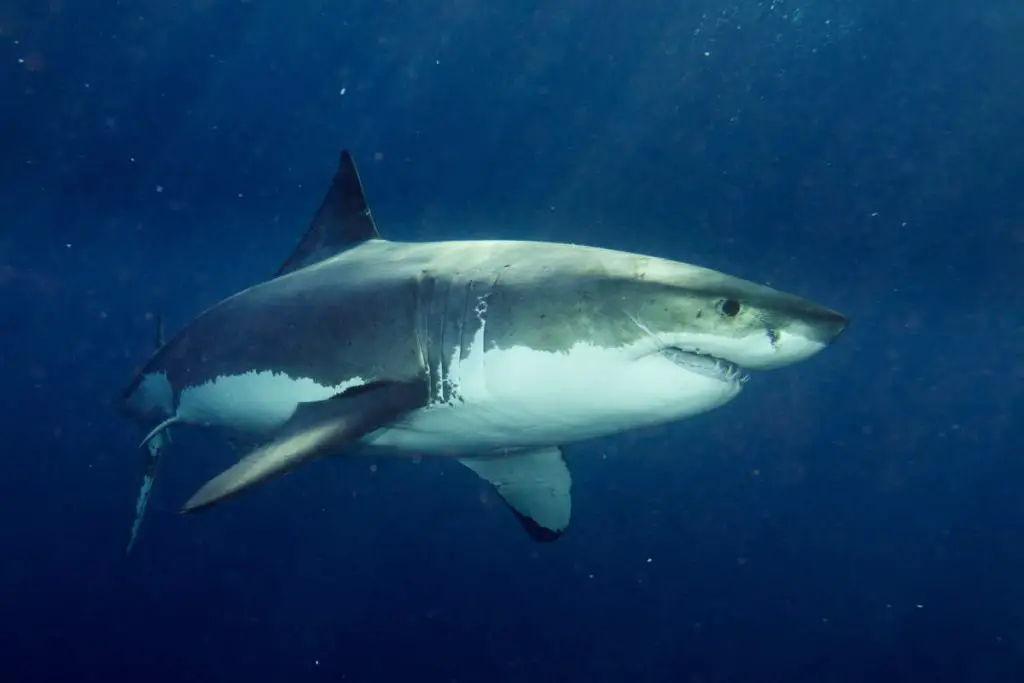
Naturally, newspapers and personal photo albums are full of unconfirmed stories about huge great whites. While only a few have been properly authenticated, circumstantial evidence suggests that the largest great white sharks can grow beyond 6 meters (20 feet) in length.
However, it’s important to note that most photos circulating online use forced perspective (a photographic technique that manipulates the size and scale of objects by adjusting the camera angle and distance, creating an illusion that makes subjects appear larger than they actually are), and some are simply photoshopped, making it difficult to verify their true size.
Historically, several very large great white shark specimens have been recorded. For decades, many sources including the Guinness Book of World Records listed two great white sharks as the largest individuals: according to these sources, in the 1870s, a 10.9 meters (36 feet) great white was captured in southern Australian waters, near Port Fairy, and an 11.3 meters (37 feet) shark was trapped in a herring weir in New Brunswick, Canada, in the 1930s.
Some researchers (understandably) question these measurements’ reliability, noting they were much larger than any other accurately reported sighting. According to these researchers, this New Brunswick shark may have been a misidentified basking shark, as the two have similar body shapes. The basking shark (Cetorhinus maximus) is the second-largest living fish, after the whale shark, and one of three plankton-eating sharks besides the whale shark and megamouth shark.
The question of the Port Fairy shark was settled in the 1970s when J. E. Randall examined the shark’s jaws and “found that the Port Fairy shark was of the order of 5 m (17 ft) in length and suggested that a mistake had been made in the original record, in 1870, of the shark’s length”.
So, what is the largest great white shark ever recorded?
There is no clear winner, but there are a few candidates (and a lot of disputes, too):
Top 15 Largest great white sharks ever recorded
I did not assign a specific order to the largest great white sharks list because, as you’ll see, some of the claimed sizes are controversial, only a few are properly authenticated, and many experts do not believe in those measurements.
1. The Cuba Shark (1945) [Claimed length: 6.4 meters/21 feet]
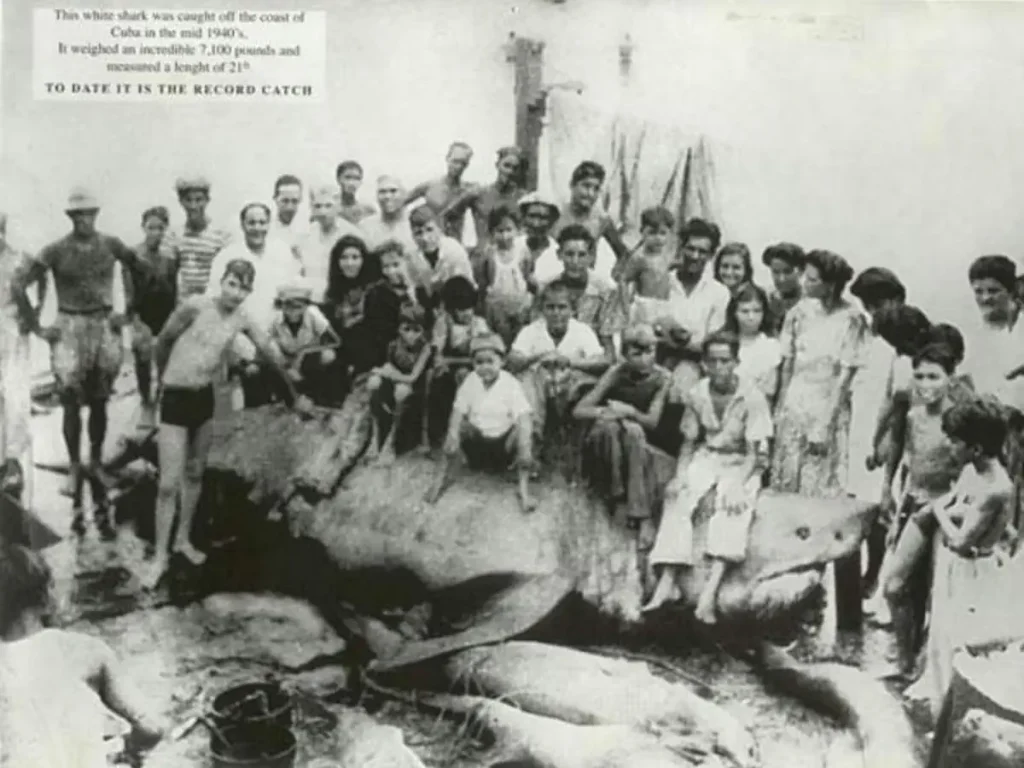
A very large great white shark was caught off the coast of Cuba in 1945. Known as the “Cojimar Specimen”, it allegedly weighed 7,000 pounds (3,175 kg) and was 21 feet (6.4 meters) in length.
At the time, an entire village seemed to come out for the photo. Several adults stood in the background, while kids sat on the long-dead shark, legs dangling over the side.
Most sources cite this shark as the largest great white shark ever recorded. But, later analysis of the photo by experts, such as R. Aidan Martin of the ReefQuest Center for Shark Research, suggests the shark fell short of its stated size. Martin instead concluded that it measured around 16 feet (4.9 meters) in length, with a weight that was hard to determine just based on a single photo.
2. Malindi, Kenya shark (1996) [Claimed length: 6.4 meters/21 feet]
On July 16, 1996, a huge pregnant female white shark was caught by local fishermen in Malindi, Kenya. It was estimated at 6.4 meters/21 feet in length, but, before its length was verified by any authority, it was cut into pieces. The pieces were weighing more than 2 tons.
But, later, based on a section of five vertebrae from this shark, scientists suggested [Cliff et al., 2000] that the shark was actually closer to just 5.7 meters (18.7 feet).
3. Ledge Point Shark (1987) [5.94 meters/19 feet 6 inches]
According to the American ichthyologist and a leading authority on coral reef fishes, also a shark expert John Ernest Randall (May 22, 1924 – April 26, 2020), the largest reliably measured and verified great white shark was 594.4 cm (19 feet 6 inches) in length. It was a female and caught off near Ledge Point, Western Australia in 1987. Its estimated weight was 2 tons.
4. Sandun (China) shark (2008) [6.1 meters/20 feet]
On March 15, 2008, in Sandun, China, Fishermen captured an oversized great white shark allegedly measuring an estimated 10 meters (33 feet)! But, when a hoist lifted the enormous shark, the scales read just 2,267.96 kg (2.5 tons). A 10-meter great white shark should be at least 9.5 tons. Scientists conclude that the shark was most likely around 6-6.1 meters in length based on its weight.
5. Canada Shark (1983) [6.1 meters/20 feet]
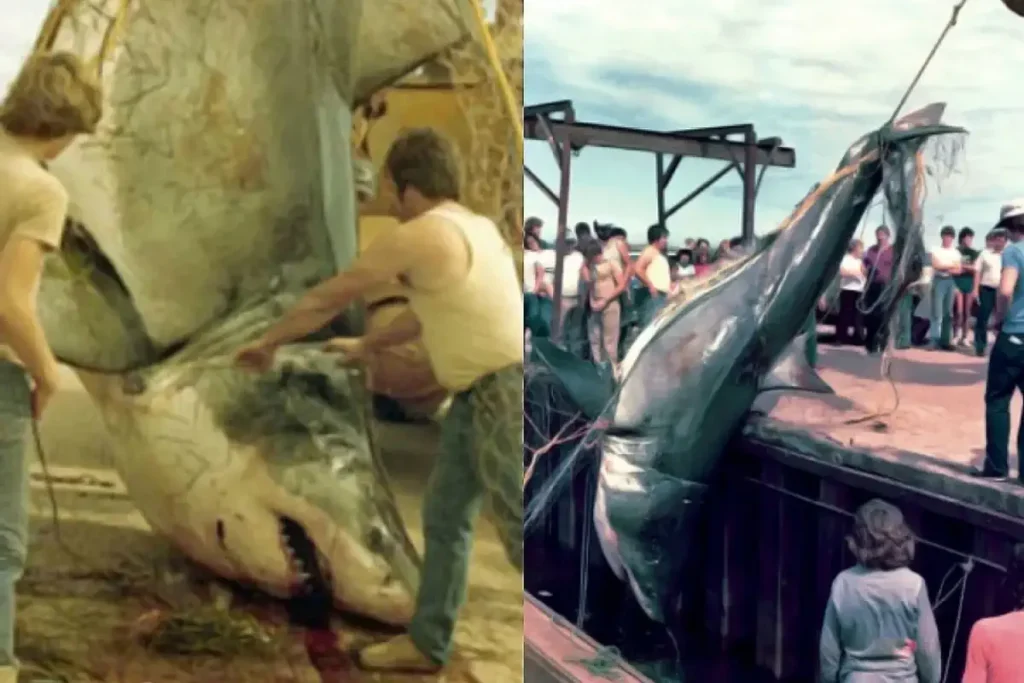
According to the Canadian Shark Research Center, the world’s largest accurately measured great white was 20 feet (6.1 meters) in length. This was a female caught in 1983 near Canada’s Prince Edward Island. It is caught by the local fisherman David McKendrick.
The shark became tangled in McKendrick’s net as he fished off the western side of the island, and died before it was brought to the surface. A large female, the shark was a rarity in the northern seas.
Unfortunately, before further measurements could be taken, the remains of the shark were taken away and buried by the officials of Fisheries and Oceans Canada (a federal institution that is responsible for safeguarding and managing Canada’s seas, fisheries, and ocean resources).
6. Haole Girl [6.1 meters/20 feet]

Haole Girl is the nickname of a female great white shark believed to be one of the largest ever recorded. She was first seen off the coast of Oahu, Hawaii, on January 13, 2019, where she was observed feeding on a sperm whale carcass. Initially, it was thought that the shark might be Deep Blue, another enormous great white, but researchers later confirmed that the shark seen in Oahu was Haole Girl. They also suggested that she could be pregnant.
Haole Girl is estimated to be about the same size as Deep Blue, which measures around 20 feet, making her one of the largest great whites ever documented.
7. Deep Blue, the largest great white shark ever filmed [6.1 meters/20 feet]
This enormous great white shark named “Deep Blue” was spotted near Isla Guadalupe, off the coast of Mexico, and is probably the largest great white shark ever to be filmed and believed to be one of the largest great white sharks ever seen.
The massive predator was first featured in August by the Discovery Channel in a documentary when researchers tagged the gigantic fish. Researchers believed Deep Blue was pregnant. The shark is thought to be around 50 years old and estimated at 20 feet (6.1 meters).
Great whites can live to around 70 years old in the wild. But today, sharks aren’t living nearly as long as they used to – and in turn, not growing as large as they once did.
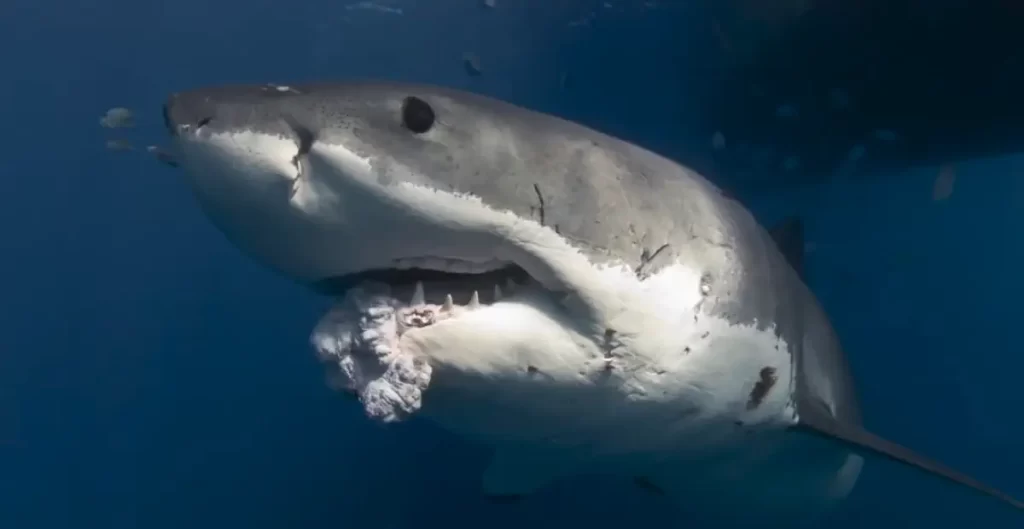
Related: 10 amazing great white shark facts
8. Mallorca shark (1969) [6.2 meters/20 feet 4 inches]
In February 1969, a large female great white shark was caught off Mallorca, Spain. It was initially reported as 8 meters (26 feet 3 inches)! However, an examination of a surviving photograph of this specimen revealed that it more likely measured between 6.2 – 6.4 meters (20 feet 4 inches to 21 feet).
9. Ganzirri, Sicily shark (1961) [Claimed length: 6.4 meters/21 feet]

On June 19, 1961, a large female white shark was harpooned by a fisherman named Domenico Sorrenti, off Ganzirri, Sicily, Italy. Its length was estimated at 6.4 meters/21 feet. The giant shark’s weight was approximately 1,500 kg (3,300 lbs).
The shark wasn’t properly measured and all that remains today is a single photograph, taken by Sorrenti himself. Based on this photograph, scientists estimated its length between 6.45 meters and 6.66 meters (21.2 feet to 21.9 feet) [see sources 1]. So the shark’s length estimated by Sorrenti was most likely accurate. But, the estimated weight of 1,500 kg was far too low for a shark of this size – it should be at least 2 tons.
10. The great white shark caught by Vic Hislop in 1985 [Claimed length: 6.6 meters/21 feet 8 inches]
A huge 21 feet and 8 inches (6.6 meters) great white shark was caught by the Australian shark hunter Vic Hislop in 1985. This may be the biggest white shark ever caught. Hislop also believes there are many even bigger sharks out there in our oceans. He also claims to have caught a bigger one than the one pictured, but couldn’t land it.
Contrary to the current belief that the great whites are not natural man-eaters, Hislop believes that the great white sharks can develop a taste for humans
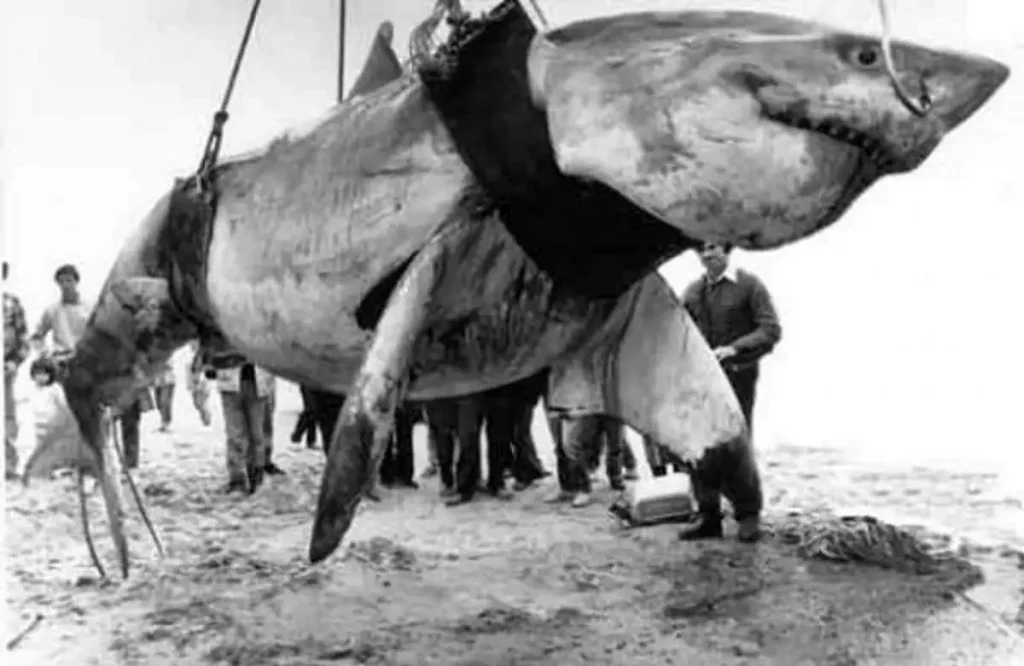
Hislop claims many of the missings did not drown but were devoured by the great whites and other sharks.
Hislop says “Once a shark has tasted humans he will attack over and over again. A shark has a very small brain but he never forgets”.
He also blames killer sharks coming inshore on commercial fishing. “We’ve thinned out fish all over the world using nets. When fishermen take in 5000 tuna they are seriously depleting the ocean of shark food.”
Please note that Vic Hislop’s claims are not accepted by the field scientists.
11. The Taiwan Shark (1997) [Claimed length: 7 meters/23 feet]
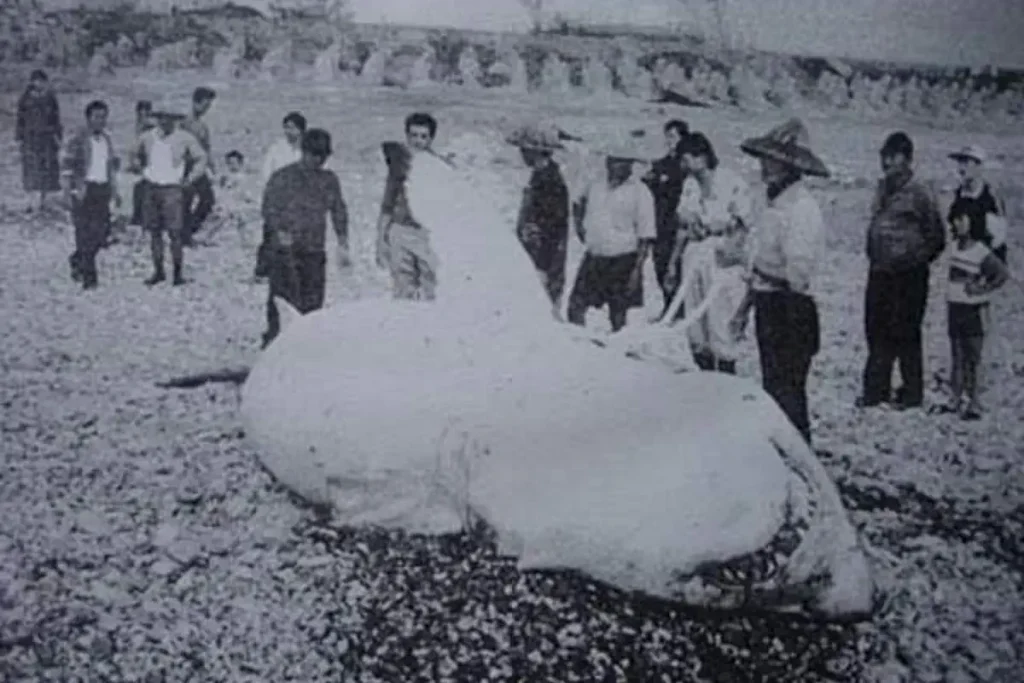
On May 14, 1997, a huge great white shark was caught in a set net off Hualien County, Taiwan. The gross weight of this animal was 2500 kilograms (5,500 pounds) and the total length is claimed at 6.7 to 7.0 meters (~22 feet). This length, however, is unconfirmed, and note that forced perspective is used in its only existing photo. Still, it is considered possibly one of the largest great white sharks ever recorded.
12. Kangaroo Island great white shark (1987) [Claimed size: 7 meters/23 feet]
On April 1, 1987, a huge great white was captured near Kangaroo Island in Australia. It was estimated at least 7 meters (23 feet) long.
According to Wikipedia, the shark size estimation methods proposed by J. E. Randall suggest that the Kangaroo Island specimen was 5.8-6.4 meters (19-21 feet) long. In a similar fashion, I. K. Fergusson also used shark size estimation methods proposed by J. E. Randall to suggest that the MALTA specimen was 5.3-5.7 meters (17-19 feet) long.
However, photographic evidence suggested that these specimens were larger than the size estimations yielded through Randall’s methods. Thus, a team of scientists, H. F. Mollet, G. M. Cailliet, A. P. Klimley, D. A. Ebert, A. D. Testi, and L. J. V. Compagno-reviewed the cases of the KANGA and MALTA specimens in 1996 to resolve the dispute by conducting a comprehensive morphometric analysis of the remains of these sharks.
Scientists re-examined photographic evidence in an attempt to validate the original size estimations and their findings indicated that estimations by P. Resiley and J. Abela (see the Malta shark below) are reasonable and could not be ruled out.

Related: Largest fish species in the world
13. The Marino Bay (Australia) Shark (2016) [Claimed length: 7 meters/23 feet]
In 2016, an Australian crew encountered and photographed what may be the largest great white shark ever seen (if their estimate is valid): approximately 23 feet (7 meters). The shark was spotted just 300 feet off the shore of Marino Bay, South Australia.
According to Shark Alerts South Australia, the non-profit organization, “the crew (of the shark patrol helicopter) used their Jet Boat to compare the size which is around 6 meters (20 feet) and the shark was bigger”.
But naturally many people are skeptical about the claim. Colin Simpfendorfer, a marine sciences professor at James Cook University, said:
“The size issue from photos like this is always challenging. You can get a sense of its size, but measuring it to that sort of accuracy is always a challenge, particularly when there’s very little in the way of size reference in the picture.”
In a comment on their Facebook page, Shark Alerts South Australia says: “These guys are professionals so I can ensure you no lies on the length here… As stated the “biggest they’ve ever seen”.
14. Istanbul shark (1965) [Claimed length: 7 meters/23 feet]
On December 28, 1965, a huge great white shark was caught near Maiden’s Tower, Istanbul, Turkey. It was measured at 7 meters and weighed an estimated 3 tons.
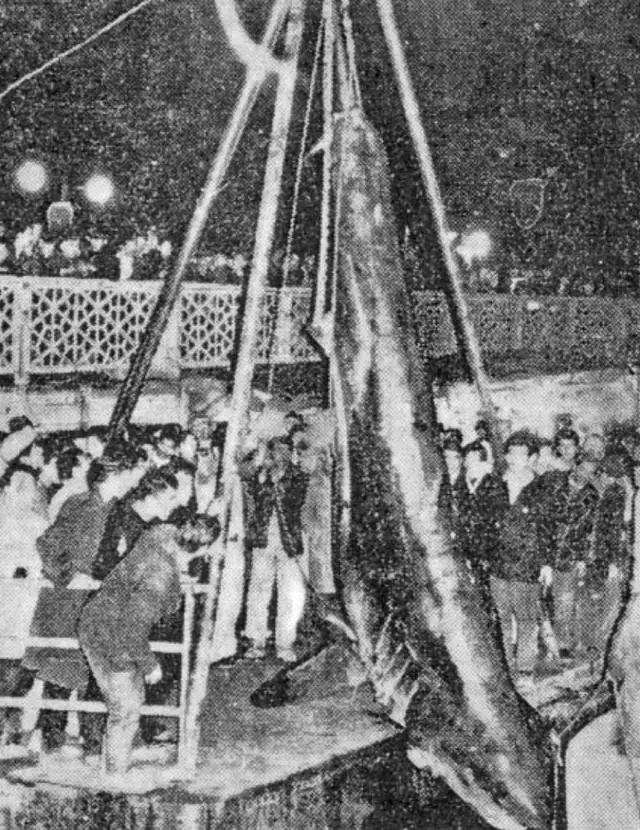
There are also other reports of exceptionally large great white sharks from Turkey:
- A large specimen was caught in the Sea of Marmara in 1916, after becoming entrapped in a fishing net it was shot in the head three times by fishermen (Deveciyan, 1926). It was estimated at 7 meters/23 feet.
- A female, caught by fishermen Niyazi Dalgın and Cemil Ünalır off Princes’ Islands, Marmara Sea (Istanbul). It was also estimated at 7 meters/23 feet.
- A very large shark caught in the Bosphorus Strait was reported to have measured 8 meters/26 feet and 3 inches in 1926. Allegedly this shark also weighed an estimated 4,500 kg.
15. Malta shark (1987) [Claimed length: 7.23 meters/23.7 feet]

On April 17, 1987, Alfredo Cutajar caught a big female great white off the coast of Filfla, Malta that was reportedly measured to be 7.23 meters (23.7 feet) long and weighed 2,880 kg (6,349 lbs).
In the mid-90s, Cutajar and John Abela were interviewed for a documentary “Jaws in the Mediterranean“. This time, Cutajar claimed that the shark was 7.01 meters (23 feet) and Abela confirmed that. He said that he had accurately measured the shark twice, as it lay on the floor, at 23 feet 5 inches (7.14 meters). In 2001, again, Cutajar said that it was 7.01 meters (23 feet) in length.
Later, based on a set of its jaws, Spanish shark researchers Joan Barrull and Isabel Mate estimated that the Malta shark was between 6,68-6.81 meters (21.92-22.34 feet) in length.
There’s been some dispute about the accuracy of these numbers, however, and experts have been arguing over it for years. Shark experts Richard Ellis and John E. McCosker, authors of the book The Great White Shark (1991), have also largely discounted the claim of the Maltese fisherman.
Great White Sharks’ relationship with humans
The great white sharks are also known as the great white, white pointer, white shark, or white death. Despite that they are being responsible for by far the largest number of recorded shark attacks on humans, many scientists believe that they do not prey on humans.
In the Mediterranean Sea, there have been 31 confirmed attacks against humans in the last two centuries, most of which were non-fatal. Scientists say many of the attacks are “test bites”, and the fatalities are usually caused by blood loss from the initial bite rather than from critical organ loss or from whole consumption.
Humans are not appropriate prey because the shark’s digestion is too slow to cope with a human’s high ratio of bone to muscle and fat. Accordingly, in most recorded attacks, great whites broke off contact after the first bite. However, some researchers have hypothesized that the reason the proportion of fatalities is low is not
In the 1980s, John McCosker, Chair of Aquatic Biology at the California Academy of Sciences, noted that divers who dove solo and were attacked by great whites were generally at least partially consumed, while divers who followed the buddy system were generally rescued by their buddy.
McCosker and Timothy C. Tricas, an author and professor at the University of Hawaii, suggest that a standard pattern for great whites is to make an initial devastating attack and then wait for the prey to weaken before consuming the wounded animal. Humans’ ability to move out of reach with the help of others, thus foiling the attack, is unusual for a great white’s prey.

Related: How long do great white sharks live?
Sources
- De Maddalena, A., Zuffa, M., Lipek, L., Celona A. (2001). “An analysis of the photographic evidence of the largest great white sharks, Carcharodon carcharias (Linnaeus, 1758), captured in the Mediterranean Sea with considerations about the maximum size of the species.” Annales, Series Historia Naturalis, 11 (2): 193-206.
- Great white shark on Wikipedia
- Largest Great White Shark on Discovery.com
- Largest Predatory Fish on Guinness World Records Book
- What Are the Biggest Great White Sharks Ever Recorded? on SharkFacts
- “This Might Be The Largest Great White Shark Ever Caught On Camera” on The Dodo
- “What Are the Biggest Great White Sharks Ever Recorded?” on owlcation.com
- Mediterranean Great White Sharks – A Comprehensive Study Including All Recorded Sightings. By Alessandro De Maddalena and Walter Heim.
- Study: “An analysis of the photographic
evidence of the largest great white sharks, Carcharodon carcharias (Linnaeus, 1754), captured in the Mediterranean Sea with considerations about the maximum size of the species”. Alessandro de Maddalena, Marco Zuffa, Lovrenc Lipej, Antonio Celona. October 10, 2001. (Pdf) - Cliff, G., Compagno, L. J. V., Smale, M. J., Van der Elst, R. P., Wintner, S. P. (2000). “First records of white sharks, Carcharodon carcharias, from Mauritius, Zanzibar, Madagascar, and Kenya.” South African Journal of Science, 96 (7): 365-367.
- “Maximum size of the white shark” on the Devian Art website
- Deep Blue (great white shark) on Wikipedia
- Haole Girl (great white shark) on Wikipedia
- Moon Landings: All-Time List [1966-2025] - February 2, 2025
- What Is Max-Q and Why Is It Important During Rocket Launches? - January 16, 2025
- Top 10 Tallest Rockets Ever Launched [2025 Update] - January 16, 2025


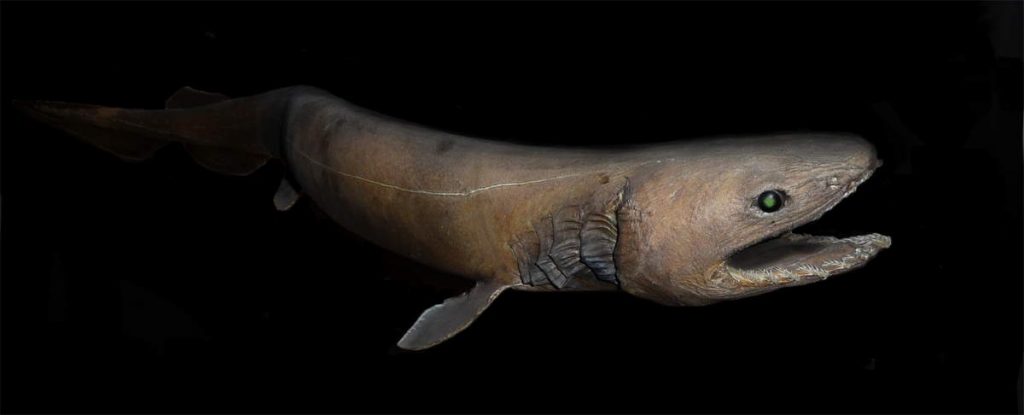

17 replies on “15 Largest Great White Sharks Ever Recorded [With Photos!]”
there have been documented sharks 35 feet or larger. There was also a frozen architeuthis dux at 100 feet found frozen in the antarctica in the past. The oceans go VERY deep. There is no way to say what is really alive and what is not.
Documented white sharks at 35 ft? Would you please provide sources for that claim?
What about the 23″5′ caught and measured accurately in Malta in 1987?
Did you read the article? The Malta shark is discussed in it.
I was in Malta in 1987 when it was caught and the size is correct I see it measured 23.5 feet long
i caught it, it was over 89 feet
Do you feel like a juvenile who says stupid Sh** yet?
Here’s a write-up I put together on the same subject
https://www.deviantart.com/jes86/art/Biggest-White-Sharks-741796632
A great write-up! Can I use it to update this article?
[…] just under 7 metres in length and weighing in at 2,500 kg, it is the largest specimen ever caught. https://ourplnt.com/largest-great-white-sharks-ever-recorded/#The_Taiwan_Shark_(1997)%5D […]
There’s another strange claim. In the Azores a 9m GW was allegedly caught and measured by an experienced sports fishermen, one Trevor Housby. He made several claims about specific measurements, such as the size of the fins and the weight.
However, it seems that Housby was not personally present when it was caught, according to some sources – and the pictures definitely shows a much smaller shark. Nowhere near 9 m. For example, it was claimed that it had a circumference of the body of 20 feet, but that would make the diameter around 6 feet, which is clearly not what the picture shows, even accounting for the deformity shown due to the weight of the body.
But it is not all that simple!
When it comes to length, there are several different ways to measure, which gives different results for the same GW. There’s along the curves to the tip of the upper caudal fin lobe, There’s between the pegs, there’s between the pegs angled from nose tip to upper fin lobe tip. I believe the Malta shark was measured between the nose tip, along the curve, to the tip of the upper lobe of the bent-back caudal fin, as claimed by the people who measured the shark.
This would definitely give a somewhat bigger measure than a proper between the pegs measure, which is not very easy to make. This is why many take the measure from nose tip along the curve to the fork in the tail (alternatively to the beginning of the tail, the “standard length”, but sharks are peculiar so it’s not always obvious where the body ends and tail starts).
People simply make the measurement which gives the biggest measure and the proper measurement is very difficult to do correctly on such an enormous subject.
Therefore, the very same shark may be 16 feet in standard length, while it could be 20 feet along the curve to the bent back upper caudal fin lobe.
The same thing happened with crocodile skulls – scientists measure them in a standard way, from the tip of the snout to the “condyles” where the skull is attached to the spine. This creates and “apples and oranges” situation, where the claimed size is the TOTAL length, but the “scientific measure” creates a much smaller measure, because they use the condylobasal length, which is not the length of the entire skull.
Basically, a claimed length is worthless if it does not have information about how the length was measured.
Thanks for the comment, Kurt!
There have been monster great whites caught off the coast of South Africa, particularly Umhlanga Rocks in Kwa Zulu Natal. The local Sharks Board has records of many of these. Martins Beach Bar on the beach walk next to the Pearls of Umhlanga had some really terrifying pictures in the bar.
The Prince Edward Island Great White catch was in 1983, not 1988.
Fixed, thanks!
Will they take you on a tour to see great white sharks. Is Australia a good place to see a great white
So sad that we as humans have to kill these extremely old sharks , wiping them out at that magnificent size. They are so beautiful ! yet im terrified of them . I willl accept the fact that the ocean is theirs and stay on land to admire them.!